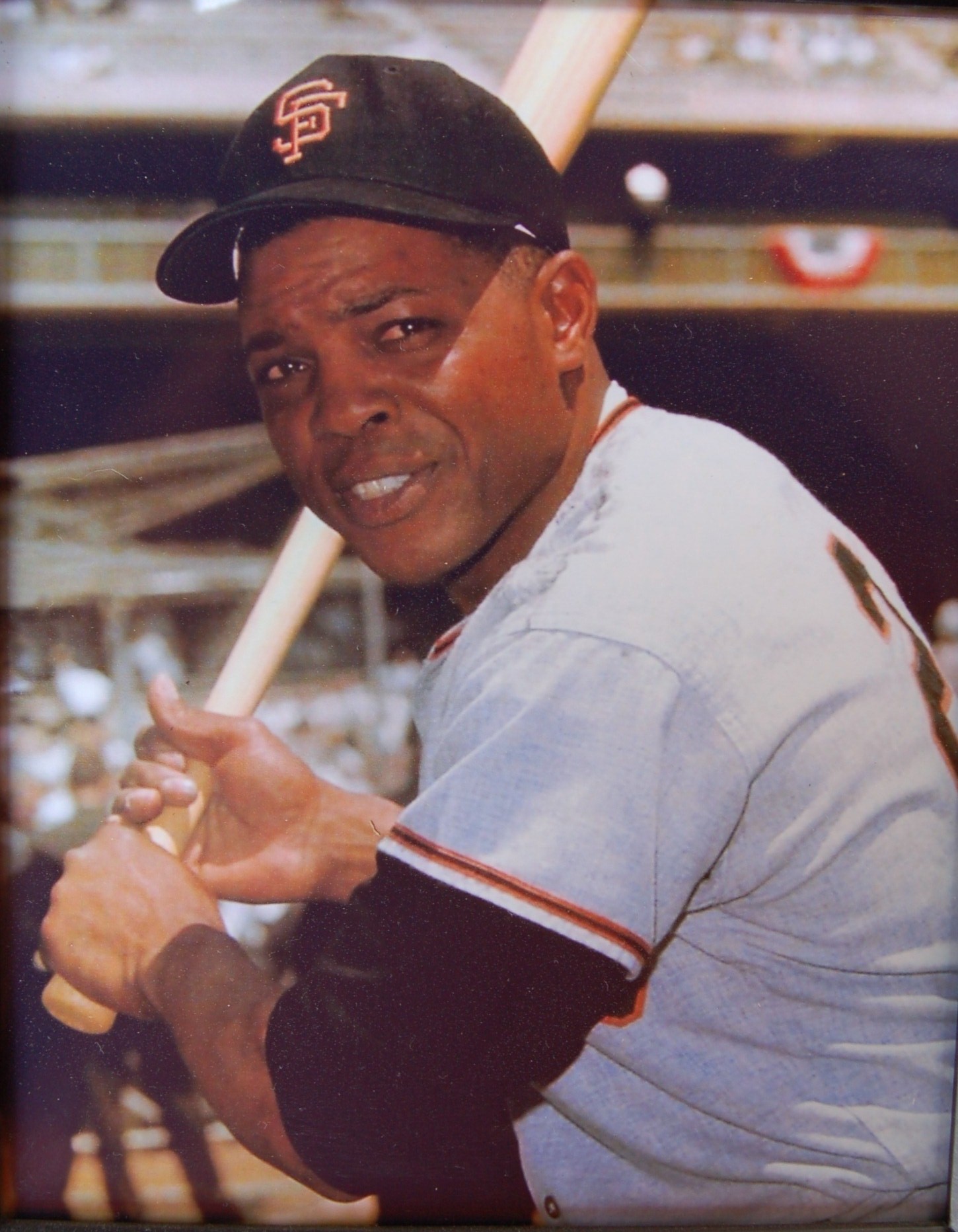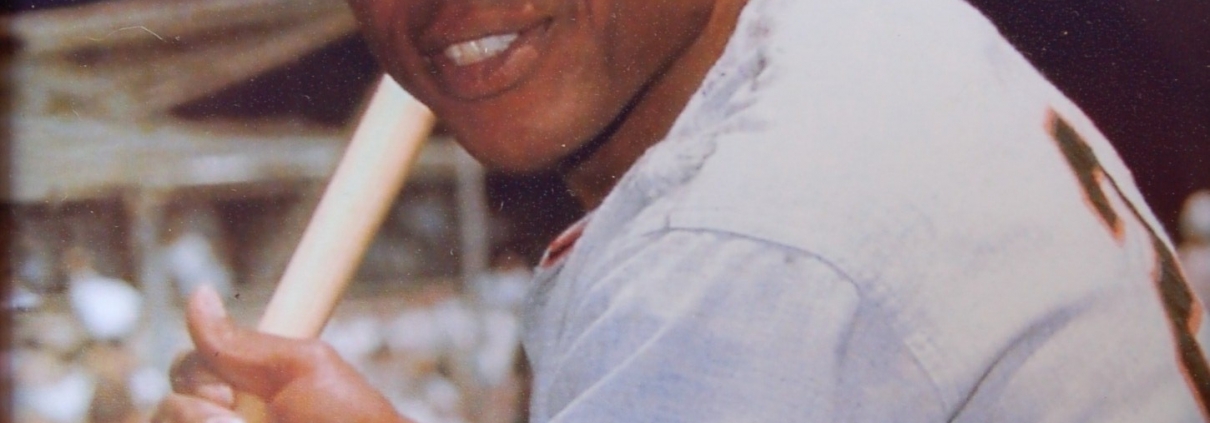June 1, 1962: Willie Mays, Giants return to New York for first time, beat the Mets
 On August 18, 1957, came an anticipated yet numbing announcement. After 75 years in New York at various incarnations of the Polo Grounds, the Giants were moving to San Francisco.
On August 18, 1957, came an anticipated yet numbing announcement. After 75 years in New York at various incarnations of the Polo Grounds, the Giants were moving to San Francisco.
New York was without National League baseball for four long seasons. Four seasons of listening to radio re-creations of day games by Les Keiter on WINS. As for the night games, they were “just getting under way” at bedtime for the fans back in New York.
National League baseball returned to the Polo Grounds on April 13, 1962, when the Mets, after opening their inaugural season on the road, took up residence in the Polo Grounds. Attendance was only 12,447. Things really wouldn’t be right until the Dodgers and Giants came back, if only to visit. The Dodgers arrived first, playing before 55,704 fans on Memorial Day.
On the evening of June 1, Willie Came Home.1 There were 43,742 fans, many of whom remembered the “Miracle of Coogan’s Bluff” in Willie’s first year and “The Catch” in center field in the 1954 World Series. Willie Mays returned to New York wearing a uniform that seemed to have just too many letters, and announcer Russ Hodges was in a booth reserved for visiting announcers.
The landscape had changed some since 1957. The ballpark had been given a much-needed coat of paint and the elevated subway station was now below ground. The crowd first saw Willie when he joined his teammates for infield practice. Unbeknownst to his New York admirers, it was not uncommon for Mays to partake in infield drills. Hank Sauer, who had homered at the Polo Grounds on September 8, 1957, against the Dodgers for the last New York Giants homer at the ballpark, was now a coach with San Francisco. He pitched batting practice before the game. Also throwing a bit in batting practice was Johnny Antonelli, ace of the 1957 mound staff, who had retired after the 1961 season. Antonelli, in the last Giants home game at the Polo Grounds, had yielded a homer to Frank Thomas, who was now hitting homers for the Mets.
At 7:11 P.M., Number 24 came up to take his batting-practice swings. The crowd showered him with applause as he sent three balls into and beyond the stands, one going over the roof in left field.
Before the game manager Al Dark and his players were introduced and stood along the third-base line.
When the game began, Roger Craig (2-6), a former Dodger, was on the mound for the Mets. Billy Pierce (7-0) started for the Giants. Pierce, who had been in the American League through 1961, had not played at the Polo Grounds as a big leaguer. However, he appeared at the ballpark on August 7, 1944, in the Esquire’s All-American Boys’ Baseball Game. In that game, he started and pitched six shutout innings as his East All-Stars defeated the West All-Stars, 6-0.
In the top of the first inning, Willie McCovey came to bat with one out and lashed a ball off the roof in right field, just inside the foul pole, for his sixth homer of the season. The Giants added to their lead in the third inning. Chuck Hiller singled with one out and McCovey’s second blast off Craig, this time just eluding the foul pole in left and landing on the roof, made the score 3-0.
In the top of the fifth, the crowd got what they came to see. After Craig finally got McCovey out, Mays came to the plate and lined a homer into the right-field stands, his 17th of the season, best in the National League. After the game a sportswriter asked him about his most memorable hit at the Polo Grounds. Mays responded, “The first one.”2 In 1951, after going hitless in his first 12 at-bats, Willie had homered off Milwaukee’s Warren Spahn for his first big-league hit, and it was that homer he was referring to. However, his first trip to the Polo Grounds had been on May 29, 1949, when the 18-year-old was with the Birmingham Black Barons. He had homered then, as well.
Craig left the game for a pinch-hitter in the bottom of the fifth inning. The pinch-hitter was Richie Ashburn, who had first appeared at the Polo Grounds as a catcher in the 1944 Esquire’s Game, making the last out of that contest. Willard Hunter, in his first game with the Mets, came on to pitch in the sixth inning.
New York, after winning nine of 12 games from May 6 through May 20 and rising as high as eighth place, had slipped on the proverbial banana peel, and lost 11 straight games. The Mets’ record coming into the game was 12-30. Despite that record, they had not been shut out all season. Manager Casey Stengel loaded his lineup exclusively with right-handed batters against the Giants lefty, but Pierce was in control, and it looked as though he would keep the Mets from scoring on this night.
But the budding stars of the Mets were as adept at finding ways to score as they were at finding ways to lose. Rod Kanehl hit his first career homer, a solo shot, to put the Mets on the board in the sixth inning. They would not be shut out this night.
The Giants broke things open and built a seemingly unsurmountable lead in the seventh inning. In a righty-lefty switch, Dark sent up Harvey Kuenn to pinch-hit for McCovey. Kuenn opened the inning with a single and Mays singled for his second hit of the game. After Orlando Cepeda struck out, Felipe Alou scored Kuenn with a single on which Mays raced from first to third. Predictably, Willie’s hat went flying as he passed second base. After a walk to Tom Haller, Jim Davenport launched a grand slam that made the score 9-1. Hunter got out of the inning without further damage and pitched scoreless ball in the eighth inning.
The Mets clawed their way back into the game with an eighth-inning rally. After Pierce struck out pinch-hitter Cliff Cook, Elio Chacon, who the prior weekend in San Francisco had a shoving contest with Mays, reached on a throwing error by Giants shortstop Jose Pagan. Kanehl ripped a single up the middle for his second straight hit, and Charlie Neal sent a double into the bullpen in distant left-center field. A two-run single through the left side by Thomas cut the lead to 9-4, and Giants manager Dark went to the mound to change pitchers.
The fans remembered Dark. He had joined the Giants in 1950 and keyed their 1951 Miracle of Coogan’s Bluff pennant and 1954 World Series championship before being traded to St. Louis during the 1956 season. They cheered him when he brought out the lineup cards before the game, but when he came out to change pitchers, spectators gave him a chorus of boos. The rallying Mets had won over much of the crowd. The “New Breed” of Mets fans, initially outnumbered by the old Mays and Giants fans, had gained more than a few converts.
Bobby Bolin came in for the Giants with a runner on base and yielded a first-pitch two-run homer to Felix Mantilla that capped the Mets’ scoring. Bolin navigated his way through the balance of the inning without further damage. Stengel sent up lefty-hitting Ed Bouchee to pinch-hit for catcher Harry Chiti, and Bolin struck him out. After walking Joe Christopher, Bolin got Marv Throneberry, pinch-hitting for Jim Hickman, on a popup. When Bolin began the ninth inning with two pitches to Sammy Taylor that were far out of the strike zone, Dark brought in ace reliever Stu Miller, who had pitched two innings at the Polo Grounds in the finale on September 29, 1957.
Miller took care of business, although the Mets mounted a threat. A walk to Taylor and a two-out single by Neal put runners at first and second for Thomas, who represented the tying run. His hard grounder was corralled by third baseman Davenport, whose throw to second base forced Neal and brought the game to a close in 3:01.
Over the weekend, the Giants and Mets played before 118,845 fans. It was the best-attended series at the Polo Grounds during the Mets’ first season.
The Giants, with their win, stayed in a first-place tie with Los Angeles, and the teams were still tied at season’s end. After defeating the Dodgers in a best-of-three playoff, the Giants were in the World Series against the New York Yankees. Mays came back to Yankee Stadium for his first meaningful game at that venue (the Giants had played an exhibition there in 1961) since the 1951 World Series.
For the Mets, the loss put their record at 12-31. They finished their first season at 40-120.
Sources
In addition to Baseball-Reference.com and the sources cited in the Notes, the author used the following:
Jupiter, Harry. “Giants ‘Capture’ N.Y.: 1 for Mays and 2 for McCovey,” San Francisco Examiner, June 2, 1962: 37-38.
Richman, Arthur (New York Daily Mirror). “Mays Admits — ‘Goose-Bumps’ All Over,” reprinted in San Francisco Examiner, June 2, 1962: 37.
Sheehan, Joseph M. “43,742 See Giants Turn Back Mets 9-6, Despite New York’s 5 Runs in 8th,” New York Times, June 2, 1962: 12.
Teague, Robert L. “Q: Who’s Who Here? A: No. 24 — Polo Grounds Fans Cheer Mays Even for Doing Nothing,” New York Times, June 2, 1962: 12.
Notes
1 Harry Jupiter, “Hey You Guys, Where You Been: Even Antonelli Welcomes S.F.,” San Francisco Examiner, June 2, 1962: 38.
2 Norman Miller (United Press International), “Like I Never Left Home,” San Francisco Examiner, June 2, 1962: 38.
Additional Stats
San Francisco Giants 9
New York Mets 6
Polo Grounds
New York, NY
Box Score + PBP:
Corrections? Additions?
If you can help us improve this game story, contact us.


